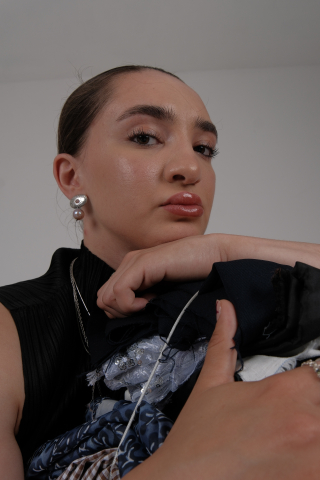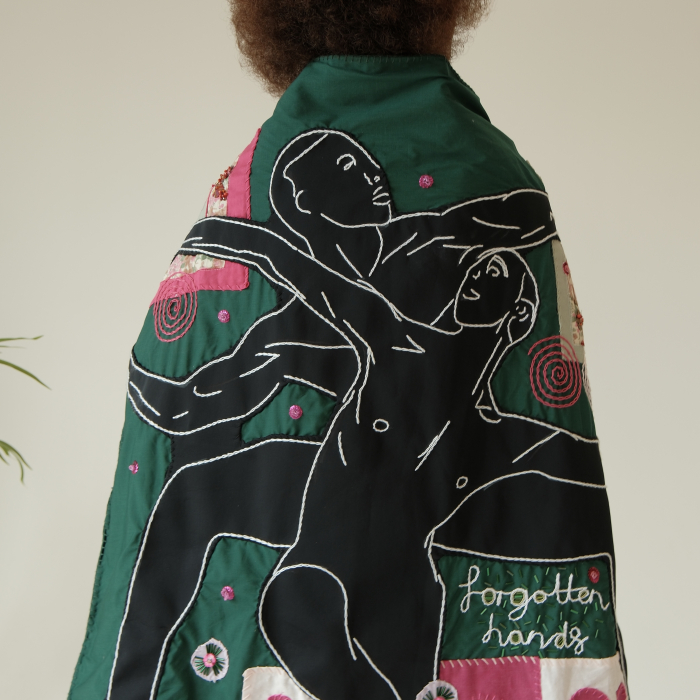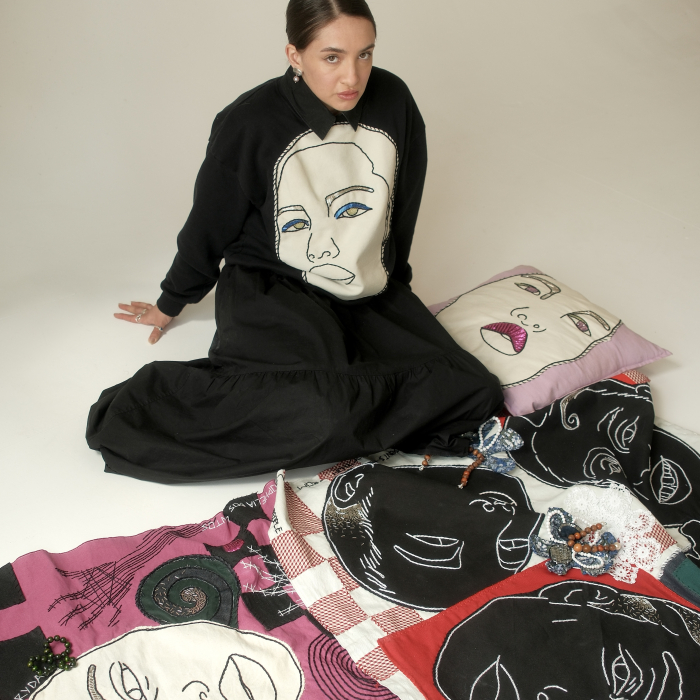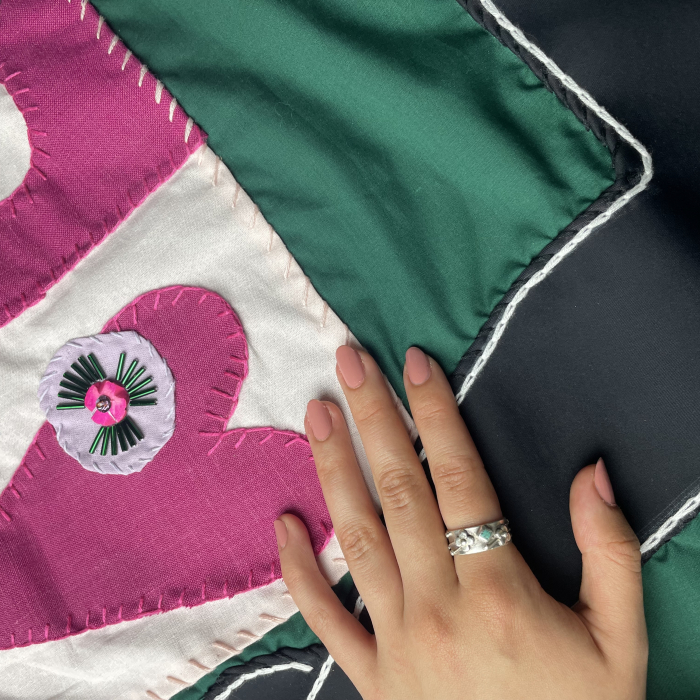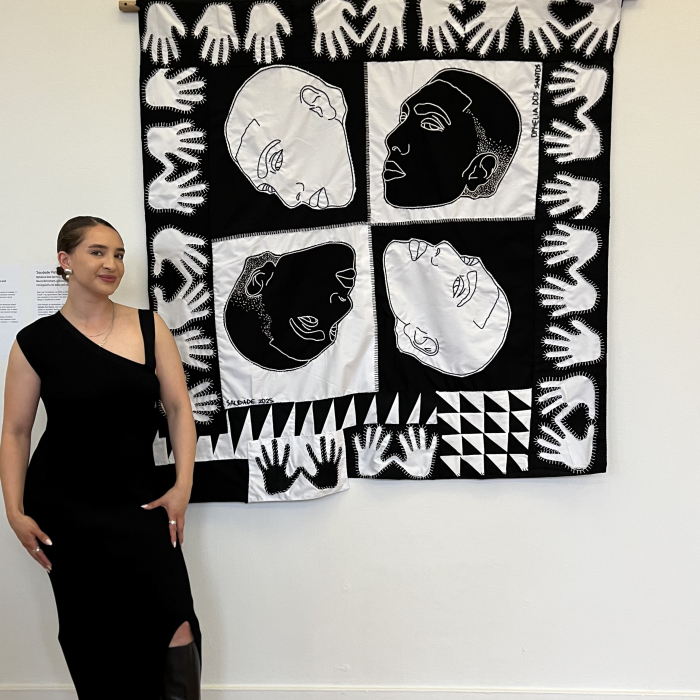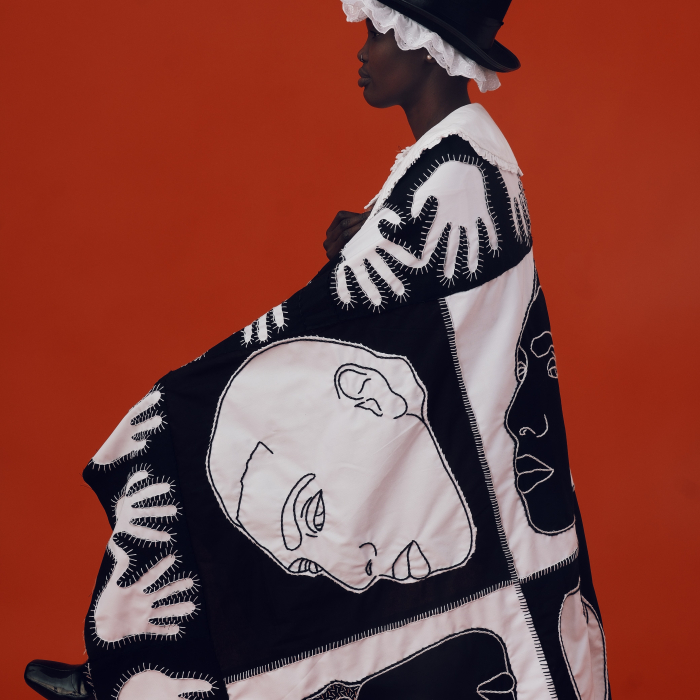Stitching from her workshop in Cardiff Bay, Ophelia often reflects on her grandfather, who worked in the same space before her as a carpenter specializing in restoration. Surrounded by his unfinished pieces, she considers themes of legacy, the passing on of skills, and the influence of her West African and Portuguese heritage on her creations — a dialogue between past and present.
By piecing together discarded fabrics, she aims to communicate stories through patchwork and hand embroidery, creating visually compelling works that inform and encourage curiosity.
Ophelia is drawn to textiles for their tactile and intimate nature, as well as their deep connection to memory, heritage, and storytelling. Fabric carries history — it is worn, passed down, repurposed and working with it allows for layered narratives. She views stitching as a meditative and intentional act, reinforcing themes of care, repair, and resilience.
Her portraits are loosely based on references but are intentionally abstracted to represent collective memory rather than specific individuals. She chooses to illustrate Black and ethnic minority features as a reflection of her environment and heritage.
In 2023–24, Ophelia coordinated the production of the Research Guide for the Study of Minority Ethnic History. As Project Officer at the Glamorgan Archives, she not only gained a deeper understanding of ethnic minority history in Wales but also developed research skills to enhance her creative approach to history, culture, and identity. This work has informed her understanding of the importance of preserving and reinterpreting stories to ensure their relevance for future generations.
Since this role, she has continued with heritage research projects and is currently working on Stories on the Edge of Memory as a Research Associate. This project utilizes technology to explore and preserve the stories of Tiger Bay—Wales’ oldest multi-ethnic community.

